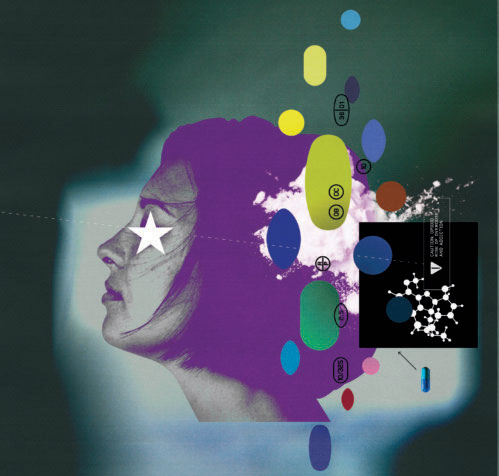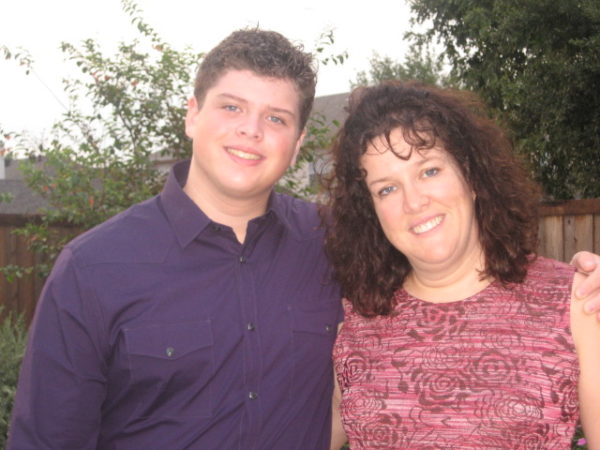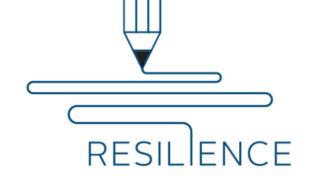Heartbreak and hope in the opioid epidemic
The experiences of three alumnae touched by the opioid crisis speak of heartbreak and hope in the struggle to reverse an ongoing national tragedy

The experiences of three alumnae touched by the opioid crisis speak of heartbreak and hope in the struggle to reverse an ongoing national tragedy
When she offers remembrances of her son, Zach, Leslie Liming Martin ’87 always returns to his gentleness and his willingness to help others. “Zach was the friend everyone longs to have,” she says. “His heart was big, but it was even bigger for the kids who didn’t quite fit in with the rest.”
Zach’s empathy was hard won; he didn’t fit in very well either. He tried to hide his anxiety, and he found places where his awkwardness lifted — on the ski hill with his snowboard in the Colorado mountain town where his family lived, absorbed in drawing a comic strip that imagined his pet hamster in a fighter jet, or parked in front of a new video game at home with a few close friends. But he faced bullying at school, and a reading disability made studying a struggle. Entering middle school only made matters worse. And the final months of eighth grade brought another kind of upheaval.
“Moving to Texas was definitely a culture change for our kids,” Martin says. “Zach went from a class of 60 to a class of 700 kids.”
For the tall, shy eighth-grader, the divorce of his parents and the move from the heart of the Rocky Mountains to the affluent Dallas suburb of Flower Mound, Texas, was a shock. Zach did his best, but his anxiety grew, and he found his own ways to relieve the stress. Unbeknownst to his mother, he started smoking marijuana before school. Before long, he had moved on to more powerful drugs.
“He probably experimented with most everything,” says Martin, who at the time attributed Zach’s moodiness and recluse behavior to what she thought was typical teenage angst.
Eventually, Zach found relief.
“What Zach really gravitated toward with his drug use were opioids,” Martin says. “Because for somebody who has anxiety and who has depression … they want to take something to forget and zone out and hope to wake up the next day and whatever it was that was bothering them then is gone.”
By the time he was 19, Martin says, Zach was seeing four different doctors. He was filling multiple prescriptions at multiple pharmacies, and he was paying cash, so that payments for the visits and the drugs wouldn’t show up on his family’s insurance.
“I naively thought, well, he’s under the care of a psychiatrist, everything must be OK,” Martin says. “Now, I know that is something you definitely don’t want to take for granted.”
In his quest for peace, in his subsequent struggle with addiction and in his accidental death in 2013 from a combination of prescription drugs that included the sedative Xanax, the muscle relaxant Flexiril and the opioid hydrocodone, Zach was hardly alone. That same year, according to the Centers for Disease Control and Prevention, more than 16,000 people died in the U.S. due to overdoses of prescription opioids. When overdose deaths from heroin are included, the number jumps to nearly 25,000, more than triple the figure for 1999.

Leslie Liming Martin ’87 (right) and her son, Zach, who died of an accidental prescription drug overdose in 2013.
As Martin would learn, her son had been swept up in a lethal wave of opioid addiction — now often termed “opioid use disorder” — that continues to ravage communities across the U.S. In the years following Zach’s death — and especially as potent synthetic drugs such as fentanyl and carfentanil gained wider use — fatalities from opioids surged at a rate that appeared to be exponential. In 2017, according to the CDC, more than 47,000 Americans died of opioid overdoses (a substantial majority of the more than 70,000 overdose deaths from all drugs). The Department of Health and Human Services reports that, for 2016–2017, more than 2 million people in the U.S. had an opioid use disorder. And since 1999, more than 200,000 have died from overdoses related to prescription opioids. A recent New York Times article notes that the increase in overdose deaths has been enough to reduce life expectancy in the U.S. over the past three years — “a pattern unprecedented since World War II.”
For Martin, a quality engineer for a prescription benefit management company, few things are now more important than sharing her son’s story. In Flower Mound and beyond, she has become an activist for transparency, seeking to pull aside the veil often drawn over the heartbreaking consequences of addiction through her participation in forums and media.
“Prior to my son’s death,” she says, “I hid because of the stigma. Back in 2013, the perception was that my son’s death was an anomaly, that it was because he was a rebellious teen, because I was a bad parent, whatever kind of label society would assign to that. And because that stigma was out there, I didn’t seek help. That stigma kept me silent. It also kept him silent. What I really have been doing over the last five years is making sure the conversation continues.”
One of the things Martin talks about in schools and at conferences is the extraordinarily addictive nature of prescription opioids. She knows better than most that the reality of that risk has been tragically slow to enter the national consciousness. Stigma is part of the reason. But the delay in understanding and addressing the risks of such drugs also owes much to the marketing campaigns that promoted them. As The New York Times’ Barry Meier and others have documented in a flood of books and articles, and as a federal court found in 2007, Purdue Pharma, which released OxyContin in 1996, included in promotional materials for the powerful opioid highly misleading statements about its potential for addiction and abuse. Some doctors, faced with patients in pain, prescribed the drug freely, relying on false assurances that, because of its time-release formula (the Contin in OxyContin stands for “continuous”), the drug was less likely than other opioids to be abused.
Miriam Aschkenasy ’94, a longtime emergency room doctor who holds a master’s degree in public health from Harvard’s T.H. Chan School of Public Health and is now working on the Initiative on Institutional Anti-Racism and Accountability at Harvard’s John F. Kennedy School of Government, was an early skeptic.
“I didn’t believe it right from the beginning,” Aschkenasy says, “and I think most ER physicians didn’t. Because we saw what other physicians weren’t seeing. As front-line pit doctors, every day interfacing with patients who are clearly addicted to these drugs, it [was] much harder for us to swallow the story that these drugs aren’t that addictive.”
Of the companies that pushed such claims — and made billions of dollars in the process — Aschkenasy says, “They knew. They knew and they lied to doctors.”
A movement in the medical field toward more-aggressive pain treatment compounded the problem. As journalist and author Beth Macy writes in her 2018 bestseller “Dopesick: Dealers, Doctors, and the Drug Company that Addicted America,” “The 1996 introduction of OxyContin coincided with the moment in medical history when doctors, hospitals, and accreditation boards were … developing new standards for pain assessment and treatment that gave pain equal status with blood pressure, heart rate, respiratory rate, and temperature.”
“They made pain the fifth vital sign,” Aschkenasy says. “Which did not help.”
Aschkenasy acknowledges the importance of relieving patients’ pain, but she also points to the risks inherent in opioids — risks she saw first-hand during her residency at Connecticut’s Hartford Hospital, from 1998 to 2001, when she learned to discern between patients legitimately seeking medication for physical pain and those driven to the ER by other motives.
“Patients would come in with certain chief complaints that were kind of red flags for potential drug seeking,” she says. “If you came in with a kidney stone, a migraine headache, back pain — those were our three most common. … So even then, we already had ideas of what people were doing.”
To get their fix, and to avoid the harrowing symptoms of withdrawal, some would invent an allergy to alternative painkillers. Others, an allergy to X-ray dye, hoping claims of kidney stone pain would be taken on faith. Some, like Leslie Martin’s son Zach, would fill prescriptions at multiple pharmacies to obtain as many doses of the drugs as possible.
“The sad part,” Aschkenasy says, “is that you would have to sit there and say to these patients, ‘You’re the third person today that I’ve had this same conversation with.’ But at that time, it was just a part of doing business. You just had patients who came in and tried to get narcotics. And some of them used, and some of them actually took their pills and sold them on the street. And that was always another red flag. If a patient asked you, ‘can you please write “no substitutes,” or “no generics” on the script’ … If you asked me that, I took that script and threw it away right there in front of you. Because name-brand pills had higher value on the street. You just have to know this stuff when you’re a doctor.”
Opioid addiction was completely
reframed from being a criminal problem
to a public health problem, when the
truth is, crack cocaine and alcoholism
are also public health problems.Miriam Aschkenasy ’94
Aschkenasy’s response to such tactics owed much to the public-health lens through which she has long viewed her profession. In deciding to administer or prescribe a drug to an individual, she looks first to that patient’s well-being. She notes that in many cases — patients with certain cancers or in end-of-life care, for example — prescribing powerful drugs is perfectly appropriate. But she also feels a responsibility to consider the larger implications for public safety and the common good. In light of the rise of so-called “superbugs,” for instance, she and many other doctors are wary of overprescribing antibiotics. And because relieving suffering is so fundamental to many doctors’ sense of their professional mission, the treatment of pain poses special challenges.
“Physicians are humans, and we’re given guidelines,” she says. “But we are meant to — and it’s important, frankly — bring ourselves to our practice. And so you’re going to find variations in practice based on that. I have colleagues who [say] ‘I don’t ever want to not give somebody pain medicine who’s in pain.’ That’s their imperative. They don’t ever want to miss giving someone pain medicine who is in pain. So, they don’t try to guess. If the patient tells them they’re in pain, they give them the pain medicine. And my perspective is, I don’t want to do that either, but I’m balancing more on the side of, ‘I [also] don’t want to give someone pain medication and contribute to their addiction.’ So, you can fall on both sides of that wall, and not be wrong, necessarily.”
Consistent with the work she is doing at Harvard, Aschkenasy is also quick to point out that racism continues to play a critical role in how drugs and drug users are perceived and treated. And while she welcomes the growing understanding of addiction as a disorder rather than a bad choice or moral failing, she also sees the current crisis as an opportunity to highlight disparities and demand consistency and equal treatment.
“[Opioid addiction] was completely reframed from being a criminal problem to a public health problem,” Aschkenasy says, “when the truth is, crack cocaine and alcoholism are also public health problems. But crack cocaine predominantly affects black communities. Marijuana use is actually higher in white communities — but it’s criminalized if you’re black. So I think it’s an opportunity for us to really have a discussion about something that’s really clear when we look at addiction. Because opioids affect predominantly white communities, it completely changes the narrative: These aren’t criminals, this is a behavioral health problem, this is a problem of a system, these people need rehab, they need help, they don’t need to go to jail. I totally agree. But the same needs to be said about all addiction.”
For Madeline Starbranch Welsh ’12, a public defense attorney who recently moved to the Charlottesville area from rural central Virginia, fighting in court for fair treatment of people with addictions has been part of the job. Her interest in the law was first sparked at Mount Holyoke by a class discussion on institutional racism. She earned her law degree from the University of Virginia School of Law, and she spent the past three years arguing on behalf of people from all backgrounds who were facing prosecution. She says the law, especially in rural areas with limited resources, has been slow to catch up with research about the nature of opioid addiction and the best approaches to treatment.
“One argument I frequently made is that these mandatory minimums, these escalating punishments, are designed for professionals,” she says, referring to sentencing laws that can turn small-time offenders into felons and struggling opioid users into the perennially incarcerated. In parts of central Virginia, Welsh says, resources for dealing with addiction — other than jail or prison — simply don’t exist. And opioid dependence is “a terrible, terrible addiction. In the best of circumstances, people who do have access to resources still have a hard time overcoming the addiction.”
Despite those odds — and a caseload steadily pushing 150 — Welsh tried to represent each client as well as she possibly could. But for those addicted to opioids, she knew from hard experience that the reality is unforgiving.
“Without money or insurance,” she says, “intensive addiction treatment was almost impossible to access unless my client was sentenced to prison time and given a program. Lots of my clients were so desperate they literally chose to go to prison so they could get better. As an opiate addict, you either get better or you die. The lucky ones got sent to prison early in their addiction, and the unlucky ones did a slow, painful process of short jail stints until they either overdosed or finally went to prison. There were no good options.”
Though most of her clients with opioid use disorders were hooked on heroin, Welsh sees a clear connection between that infamous drug (which was itself marketed in the early 1900s as a less-addictive alternative to morphine) and pharmaceutical opioids.
“A lot of people did start with pills,” she says, “and it just kind of created the [new drug] culture a little bit. Even if I have someone who never was a pill user who uses heroin, I think that the access to the drug and how much of a demand there is, is because of the initial flooding of the market with the pills.”
Welsh notes that heroin has become a much cheaper alternative to prescription opioids (a phenomenon explored in depth by the journalist Sam Quinones in his 2015 book “Dreamland: The True Tale of America’s Opiate Epidemic”). And she has seen the deadly fallout from the appearance of synthetic opioids: fentanyl — which can be more than 60 times as strong as Oxycodone — and carfentanil, an elephant tranquilizer that can in turn be more than 600 times as powerful as fentanyl.
Also troubling, Welsh says, are the ways in which courts have been slow to evolve in their approaches to addiction. While some innovations — such as drug courts and “first offender” statutes that offer first-time drug offenders the option of intensive probation and treatment rather than jail time — can be helpful, even these measures often fall short. Such alternatives often include harsh penalties for any lapses in attendance, which can pose serious challenges for those in rural areas who can’t afford transportation.
What’s still missing, Welsh says, is the institutionalization of new understandings of what it means to be dependent on a drug.
“The law,” she says, “at least in Virginia and other conservative states, has no problem criminalizing and harshly punishing behavior that clearly stems from addiction. If someone relapses while on probation and starts getting lots of positive screens for opiates, I can stand up [in court] and explain, ‘Relapse is part of recovery and they learn from each relapse’ … until I’m blue in the face, but that person is still going to do some jail time, [and then] possibly prison time for relapsing. So the medical model of addiction isn’t really catching on in the criminal context, in my experience. We still impart intention and fault to people who are hopelessly addicted and punish them as though things would’ve been different if they’d just really committed to recovery. It’s frustrating.”
Aschkenasy shares Welsh’s frustration, but also her sense that some progress has been made and that there are hopeful signs. She cites increased media attention, new trainings for doctors, electronic systems that track patients’ consumption of pills and moves by states to more tightly regulate and monitor the use of opioids, as some of the developments that have begun to address the problem and, critically, raise awareness.
Indeed, recent data indicate that fatal opioid overdoses may be leveling off, and in some places even declining. And a December 31 National Public Radio piece suggests that a wave of lawsuits in 2019 by state and local governments is likely to hit drug makers and retailers not only with massive financial liabilities but with the disclosure of internal company documents that could rapidly accelerate public understanding of the prescription opiates and the practices of those who have profited from them. Still, Aschkenasy was troubled by the recent approval of a powerful new opioid, Dsuvia, despite warnings that it might easily be abused. And she notes that a host of other challenges remain — including properly understanding the recent history of the opioid epidemic.
“We do need to keep this in the forefront,” Aschkenasy says, “both to solve the current epidemic and to take home lessons learned to prevent the next one. We need to look at some of the behaviors and policies that led to this: Taking research by pharmaceuticals at face value and letting them drive the train, morphing medical care into a service industry, and treating addiction like a crime rather than a health problem all uniquely contributed to this epidemic.”
For Martin, learning that lesson means doing everything she can to prevent further tragedies like the one her family has faced. “It’s probably the most difficult thing a parent could ever really experience,” she says of her son’s death. But from personal tragedy, Martin has created a teaching practice that is both a beacon of hope and a source of illumination. Through the nonprofit with which she works in Flower Mound, WTF or Winning the Fight, she is working to break the silence around opioid use disorders and to help others do the same.
“We can’t be afraid to pull our kids out of their bedrooms where they’re isolating and hiding,” she says. “It has to be talked about, and it has to be talked about openly and honestly, without the fear of coming forward. We need to make sure we are not putting addiction in a place where it is viewed as something bad, something immoral, something that should not be talked about and discussed. We need to understand what’s behind it. We need to talk about it. If we don’t, we’re going to continue to lose lives.”
Abe Loomis is a freelance writer in Brooklyn, New York. Contact him at abe.loomis@gmail.com.
This article appeared as “Witnessing an Epidemic” in the spring 2019 issue of the Alumnae Quarterly.
May 14, 2019










We’ve just had a program here in semi-rural Kent, CT on Opiods and other addictions.
The panel included Dita Bhargava, Jahana Hayes, Maria Horn and Sean Scanlon.
Ms Bhargava was campaigning last summer for State Attorney General when her son died of opiod overdose. Hayes is our new Congresswoman, raised by her grandmother because her 17 year old mother was a heroin addict, Horn and Scanlon (whose father was an alcoholic) are new state leglslators in CT. Recasting addictions as a public health issue helps families who no longer need police intervention and criminal stigma to compound their struggles with a loved one at a personal level. Coincidentally, Kent Planning and Zoning is now considering 3 applications for Rehabilitation facilities to bring or expand services to recovering addicts–a pretty clear indication of demand and rethinking the crisis.
Great article. Particularly like highlighting the dilemma ER doctors face.